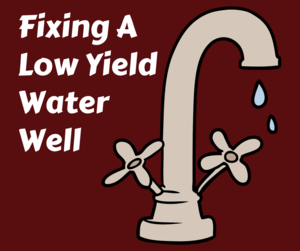CALL TODAY 1-800-441-6281
CALL TODAY 1-800-441-6281

Geothermal Technology for Heating and Cooling Your Home
- Tags:
- geothermal wells
Learning the basics of geothermal technology options for your home or business will help you determine if this heating and cooling system is right for you.
Geothermal heat pumps have been used as a source for indoor heat and cooling since the 1940s, but there are still many property owners who don’t know all the options available through this energy efficient technology.
Geothermal heat pumps are sometimes referred to as geoexchange, earth-coupled, ground-source or water-source heat pumps. They use the temperature of the earth, instead of the outside air, as the exchange medium for the heating system. Because the earth’s temperature is relatively constant, this means heating or cooling systems don’t have to work as hard to alter the temperature of the air, saving homeowners money on energy costs.
Geothermal pumps offer a variety of options to meet the needs of property owners. Systems can heat and cool the air inside the home, as well as water if so equipped. Some models feature two-speed compressors and variable fans for energy savings. There are also hybrid options which combine geothermal and air-source heat pumps for some installation savings. Geothermal pumps typically last longer, need less maintenance and are more efficient than traditional air-source heat pumps. In the United States, about 50,000 geothermal heat pumps are installed each year.
Installing a geothermal system does cost more than a traditional air-source system, but the money saved in reduced energy costs are returned in five to 10 years. Inside components last about 25 years and the underground loop will last for more than 50 years. There is also the hard to quantify value of reducing emissions from burning oil, gas or wood.
Types Of Geothermal Heat Systems
Before deciding on a geothermal system, consider which kind of systems is right for your property. The one that works best for you depends on the climate, soil conditions, land available and installation costs. In a closed-loop system, the heat pump circulates an antifreeze solution through the loop pipes buried underground on the nearby property. There are three kinds of closed-loop systems.
Learn More About Geothermal Installation.
HORIZONTAL
Usually the most cost effective, horizontal loop systems are also the most popular choice for new residential construction. To install, a trench at least four feet deep is dug on the nearby property and two pipes are buried in the trench. In cases where there is limited space, a Slinky™ loop can be used for a shorter trench.
VERTICAL
This system has been a popular choice for large commercial buildings and schools, especially those which lack the land needed for a horizontal loop or where digging trenches would be prohibitive. Vertical systems may also be favored because they do little damage to the surrounding landscape.
In a vertical system, holes 4-inches in diameter and up to 400-feet-deep are dug about 20 feet apart. Pipes are installed in the holes and are later connected to form a loop. This loop is then connected to the heat pump in the building.
POND/LAKE
While this can be a low-cost option, installing a pond or lake system depends greatly on the body of water. To install, a supply line runs from the home heat pump out to the body of water and is coiled under the surface, at least eight feet to prevent freezing. The body of water must meet volume, depth and quality criteria to make this option feasible.
OPEN-LOOP SYSTEM
Instead of a closed-loop that transfers heat through liquid in the pipe, an open-loop system uses well or surface water as the heat exchange fluid which circulates directly to the heat pump. The pump then returns the water to the well, a recharge well or releases surface water. An open-loop system depends greatly on the water supply and local environmental regulations.
HYBRID SYSTEMS
If your cooling needs are greater than your heating needs, a hybrid system might be the best option. Using different geothermal sources in combination with outdoor air or with a “standing column well” are all potential options. These options depend greatly on the surrounding geology and again the local water supply and regulations.
Geothermal heat pumps and systems can be a strong option for property owners looking to rehab their heating systems with a more efficient and environmentally friendly option. For more information about whether this is right for your home, multi-family unit or business, contact a geothermal system installer.

